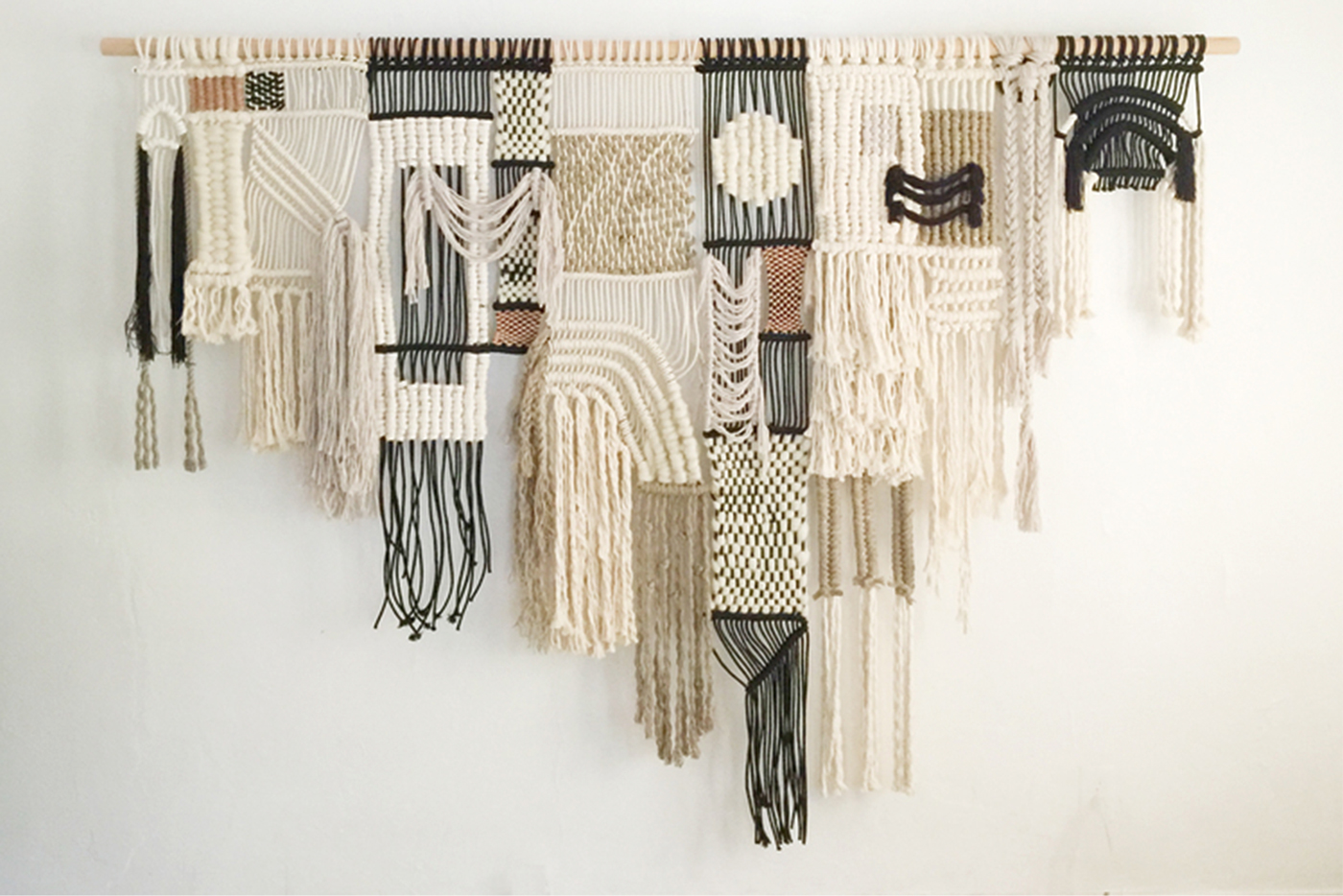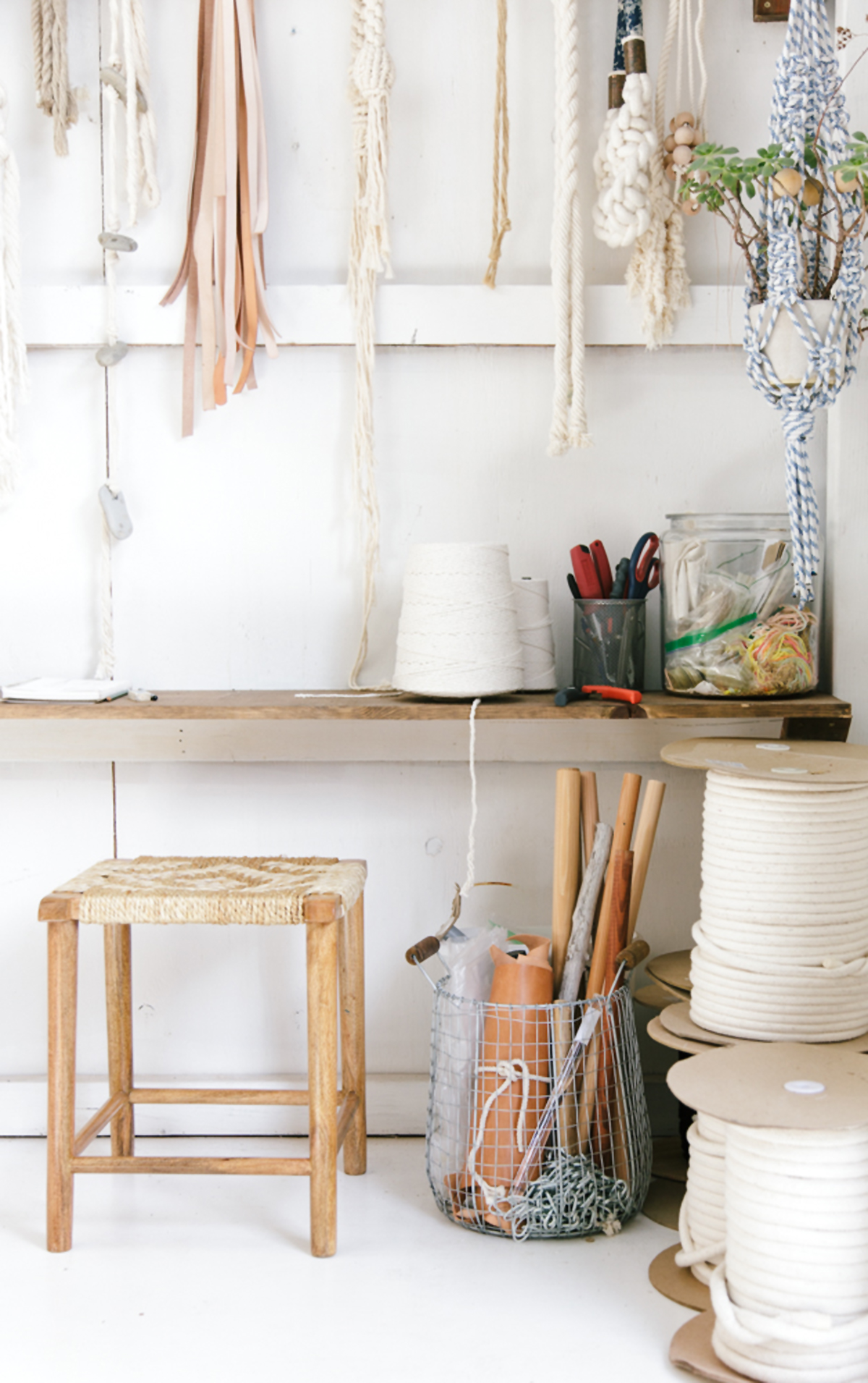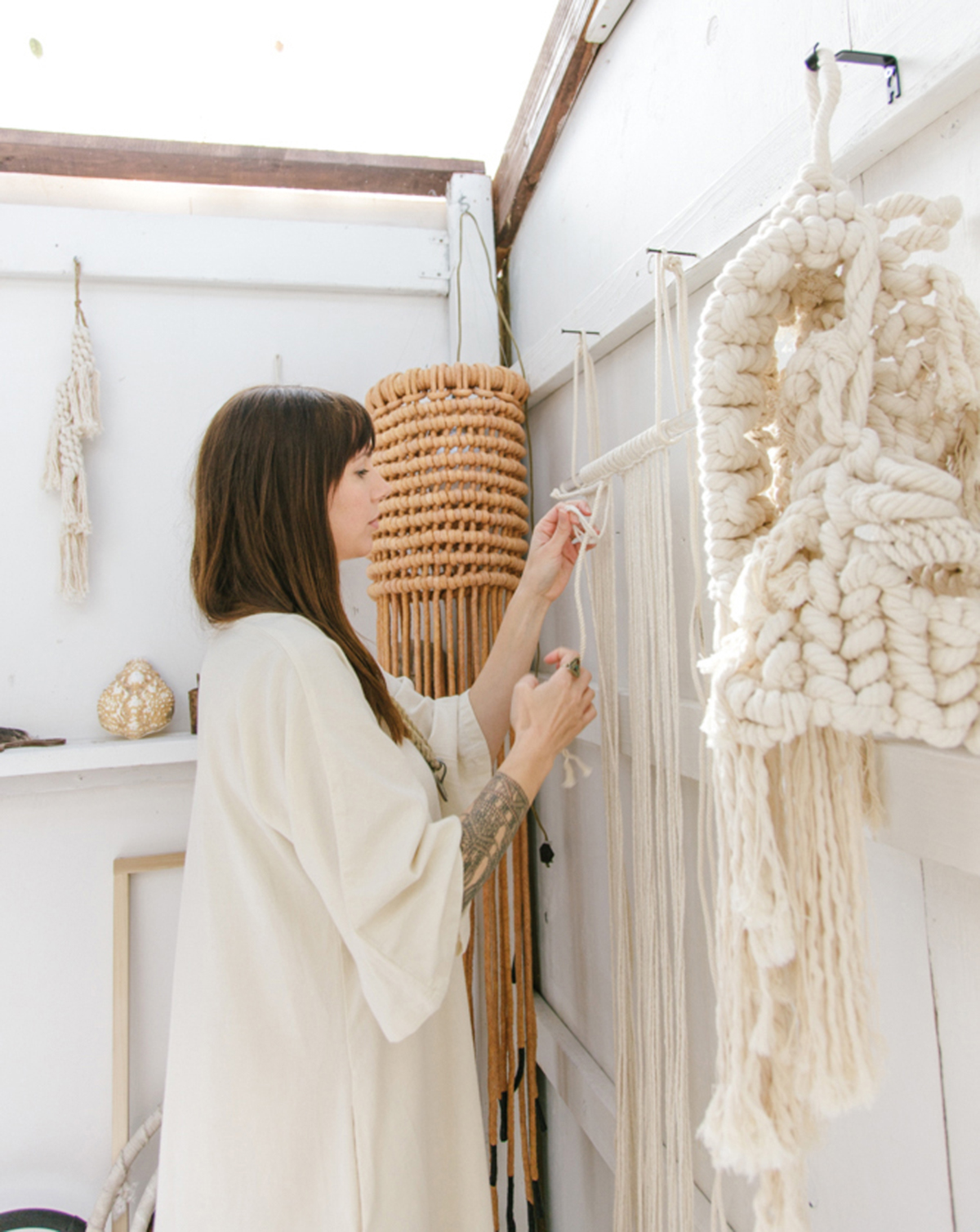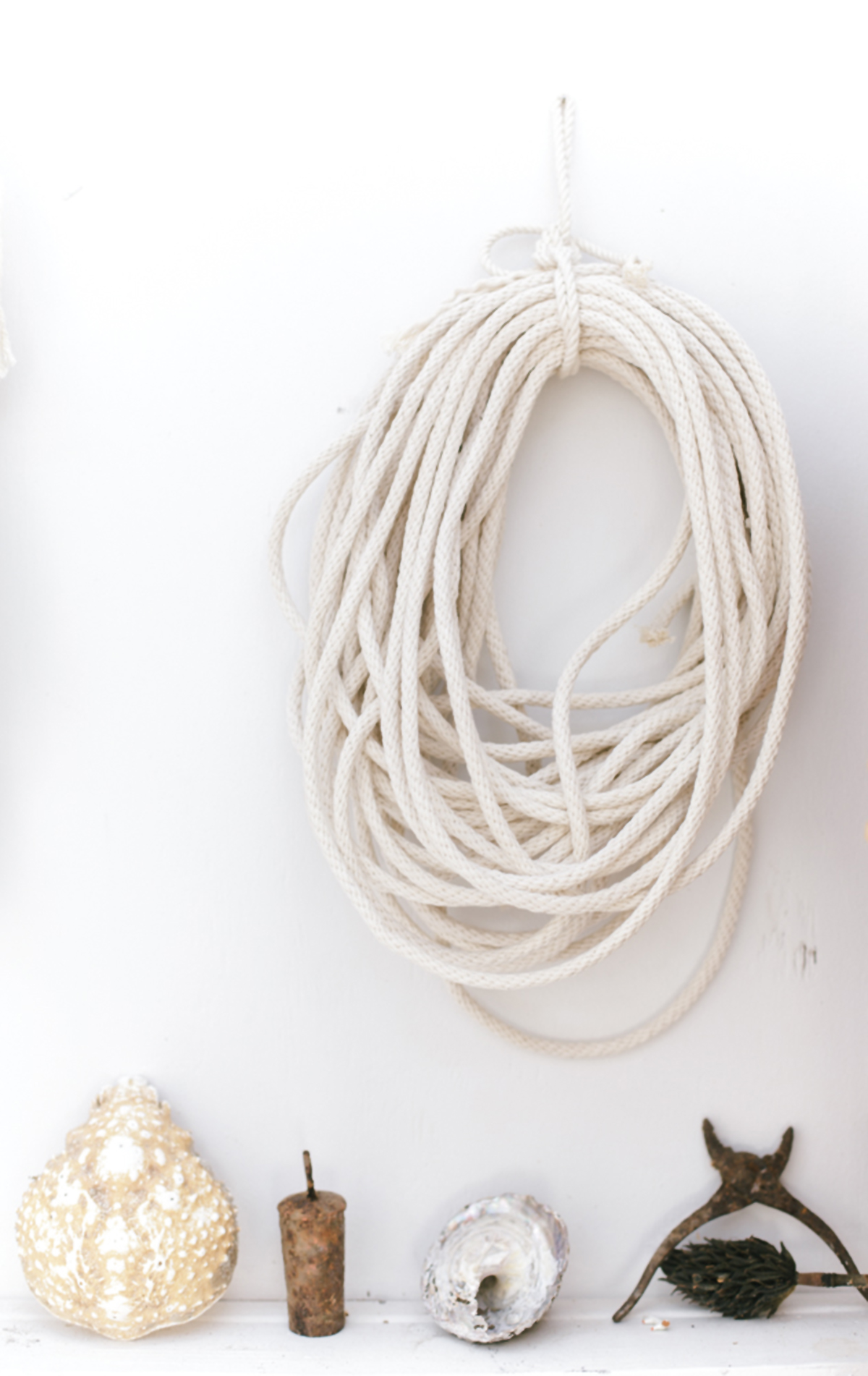Macramé – the new way of unwinding
Joan Billing & Samuel Eberli • 29.03.2018
Knot, tie, braid: the new way of unwinding: For a long time macramé was out, now it’s celebrating a phenomenal comeback as an interior trend. It’s advancing to a must-have from Berlin via London and New York to Tokyo and can once again be found in the latest concept stores as well in trendy restaurants. The macramé wave has completely swamped the lifestyle blogs with knotting instructions. DIY-fans with nimble fingers therefore tie knot after knot in the world’s living rooms and transform every room into a stylish gallery with their plant hangers and tapestries made of macramé.
Ancient craft techniques have become a way of unwinding
But why do we love macramé, this hand-knotted, traditional type of textile production? The digital revolution has radically changed our everyday lives and is leading to a fundamental change in consumer behaviour among other things. There are signs of a movement away from the digital world to tactile items, which can be seen both in architecture, design, interiors as well as with food, lifestyle and fashion. Quite a lot of people now long to make something themselves again. A real «Do It Yourself»-generation has been created from the «Do It Yourself»-movement, driven by the millennials, also known as generation Y. They want unique items and natural materials. One consequence is the great comeback of macramé, the art of hand-knotting textiles, in the world of interiors. The magic is that macramé needs a lot of time, quiet and application, and has something meditative, which is sorely missed by generation Y.
A generation searching for inner peace
Generation Y is following its own unique path in the search for inner peace and harmony. Its mantra is unwinding as a counter-movement to immediacy. Its elementary requirement is a work-life balance. From this perspective macramé’s great comeback is not quite so surprising. Among those at the head of this movement is the American textile artist Sally England, who has been focussing intensively on this ancient technique since 2010 and has re-discovered the beauty of knotting. She has catapulted the traditional handicraft into the here and now with her large-format macramé works of art with an unbelievably contemporary appearance. Her works reflect our society’s longing for uniqueness, natural materials and unwinding. She combines both great technical skill with the playful spontaneity of generation Y. This new hippy style with Bohemian chic is spreading around the whole world like a virus. Many macramé artists like Lise Silva with her necklaces made of macramé or the German pioneer Dörte Bundt with her workshops prepare our conscience for a new type of sustainability and heritage.
The macramé pioneer – Sally England
The new «Hippy generation mark 2.0» and its macramé movement are clearly being led by Sally England. Born in 1979 in Ann Arbor, Michigan, she spent her childhood surrounded by mystical lakes, forests and fields. Through this she discovered her deep connection to nature. Growing up in a second-generation family of artists, her tactile love of natural fibres and textiles was already awakened at a young age. As a child she discovered a book about macramé, which belonged to her mother. First she completed her Bachelor in «Communication Arts» and started to study old macramé books as a side line. Driven by her respect for traditional handicraft processes, in 2010 she completed her Master MFA in «Applied Craft & Design» in Portland, Oregon and while doing so carried out intensive research into the ancient knotting technique. After this Sally England returned to her home town of Michigan and opened her studio in an old Victorian apartment. Far from the fast pace of a large city, she made this her base to concentrate on the time-intensive, meditative work processes of macramé. Her hands are her tools. On the one hand she makes homely works from thick ropes and on the other hand also large-scale sculptural tapestries and room dividers. This has resulted in new interpretations of unbelievable tactility with subtle colours, geometric loops and complex designs. She incorporated materials such as gold, loam and leather in and around the natural cotton cord for her collection entitled «Black Gold». In the meantime her macramé works have achieved national recognition and they can be found in various galleries including the «R20th Century Design Gallery» in New York. Magazines such as «The Wall Journal» and «The Chicago Tribune» have reported enthusiastically about her work and famous names such as Ralph Lauren, Tommy Hilfiger, Nike or the Design Hotel ACE London belong to her clientèle. This is because the new macramé wave inspires them all.
The beauty of knotting
The history of macramé originates in the 13th century, when Arab weavers created complicated, hand-knotted head decorations to protect their horses from flies and to decorate their houses. However, the handicraft can also be traced back to the Crusaders and Freemasons. The art of macramé spread from Italy and Spain over the whole world on the sailing ships of the 14th and 15th century. Sailors knotted hanging mats, nets and gifts during the long journeys at sea for their loved ones in the various ports where they went on land. However, macramé experienced its golden age during the Victorian era. This ancient technique underwent a second renaissance during the 1960s when hippies decorated their dresses, waistcoats and plant hangers with fringes and protested against the way the world was developing and for peace by knotting. Knotted T-shirts and colourful friendship bracelets prompted a brief revival for the traditional knotting technique in the cool, technical 1980s, characterised by the Cold War.
Now macramé has made a decisive return! And with its new type of interior accessories, it is celebrating the beauty of spending time knotting. This has breathed new life and awareness into the ancient tradition. Through macramé we are once again focussing on taking more time for the important things in life. This gives us the opportunity to think calmly about everything in the fast-moving digital age.
Photography: Ryan & Jilian Pavlovich



